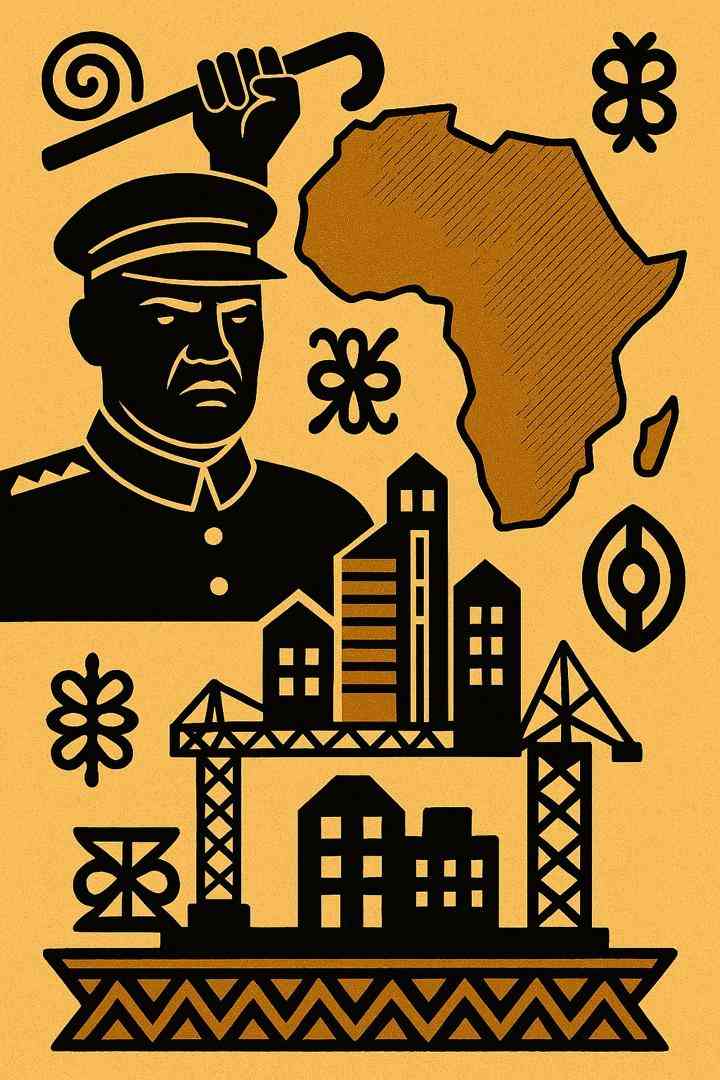
THERE is a stronger need now more than ever to restore, sustain and carefully manage our indigenous ecosystems and sustaining our biodiversity.
Not only is this important because of climate change and its explicit effects on our daily lives in Zimbabwe and the globe’s increasing pivot towards eco-tourism.
In addition to that, locally, we are increasingly leaning on our non-timber forest products to diversify our food palate and as an alternative food source given our food security challenges.
The Zimbabwean beverage market for example has seen a recent spike in the use of baobab fruit extracts in both soft and alcoholic beverages. There is nothing wrong with food diversity and innovation but there is a careful need for a sustainable exploitation of the natural environment that prioritises sustainability.
Digital tools and technology advancement at global levels have seen an improvement in satellite mapping and ecosystem tracking to help in decision-making for forestry departments and independent practitioners.
It is also inspiring that young people in Zimbabwe have embraced the digital revolution and we hear of pioneering projects, such as Umojalands, which has received wide global traction as a satellite-based tool for effective farmland use and management with possibilities of connecting participant farmers to loans based on their credit scores around considerations like soil health.
Moving on, the nature and scope of deforestation in our communities is hard to estimate from a simple count of the trees we have cut for charcoal, firewood and construction of our rural homes, kraals and fencing and digital tracking and insights can help us achieve accurate data on this, narrow down the problem to specific geographical locations and attain previously complex data, such as carbon stocks.
Could this help buffer interest in carbon forestry, build capacity of participants in these programmes and increase transparency and accountability around carbon credits?
- Mavhunga puts DeMbare into Chibuku quarterfinals
- Bulls to charge into Zimbabwe gold stocks
- Ndiraya concerned as goals dry up
- Letters: How solar power is transforming African farms
Keep Reading
Could the same technologies help communities figure out which indigenous tree species are under threat and by extension engage them more in trying to restore and protect existing species?
In addition to that, Zimbabwe and Africa, as whole, are rapidly urbanising and serious land use management and planning is critical not only at a governance level but in the sphere of climate change, especially given the threat urbanisation poses to wetlands and other carbon sinks.
The length and breadth of wetlands is again subject to debate if you are approaching it from a horizontal angle. The question then is what some of the digital tools and platforms are that can be used to track land usage, biodiversity mapping, carbon tracking and influence strategic restoration and environmental protection.
Top of the list for me is the RESTOR platform; a tool created to encourage environmental enthusiasts to ‘become a nature restoration champion with Restore. Showcase and monitor your projects, find funding, and connect with the community’ for free.
The interface is user friendly and the ability to track specific biodiversity, carbon and map deforestation affected areas make it a powerful tool in environmental conservation and restoration work.
In addition to that, the idea of community enables idea sharing and collaboration where possible through the platform. It also helps with project monitoring and evaluation through its impact indicators which include specific measurements of the total amount of land area under restoration, estimates of carbon sequestration, biodiversity benefits, and these can inspire economic boons, such as job creation.
These indicators are crucial in shaping environmental action at both organisational and national level.
Given these capabilities, the wider advantages of ecosystem tracking for Zimbabwe include contributing to the African ecosystems, which play a crucial role in the global carbon cycle. Tracking their health helps understand and address climate change impacts.
This can have a positive impact also on achieving our own nationally determined contributions targets.
Secondly, it enables sustainable development by informing sustainable development initiatives, ensuring that economic growth and human well-being are balanced with environmental stewardship.
These have the potential to extend into a pool of essential ecosystem services by using accurate data to maintain essential services like clean water, air, and soil, as well as pollination, pest control, and natural disaster preparedness and prevention.
Thirdly, as argued earlier in this article, environmental tracking is a safeguard of food security. Monitoring ecosystems supports sustainable agriculture and forestry practices, ensuring long-term food security and livelihoods for local communities.
This extends to better human health by sustaining nutrition resilience and also through the fact that ecosystem tracking helps identify potential health risks, such as disease outbreaks and waterborne illnesses, and informs strategies to mitigate them.
Fourthly, the economic benefits emanating from tracking ecosystems through eco-tourism, sustainable resource harvesting, and environmental consulting are enormous and with open-source platforms can be accessed by even grassroot communities, who can boast of their cultural, environmental and wildlife wealth thereby attracting the global eye and its pockets.
In addition to that, tracking African ecosystems supports compliance with global agreements like the Paris Agreement, Convention on Biological Diversity, and African Union's Agenda 2063.
In this data era, more information is better than less and often public – private collaborations through open-source ecosystem tracking can help meet national compliance targets.
Lastly, involving community players and organisations in ecosystems monitoring promotes environmental awareness, education, and empowerment.
This will build a better understanding, management and ownership of the natural resources that underpin each community’s well-being, support sustainable development, and conserve the country’s unique biodiversity.
There is a general fear of private actions in development spaces driven by narrow political interest one hand and genuine concerns on the other.
This often frustrates the possibilities of public–private partnerships and tolerance for new technologies and ideas not only in Zimbabwe, but globally. The advances in digital technology, the internet of things and the possibilities being presented by artificial intelligence in the modern era is guaranteed to revolutionise data and information access, which if used ethically and enabled structurally, offer new possibilities for solution design in the fight against climate change.
It is imperative that as developing countries, we increase our learning, tolerate liberal information ecosystems, and generate interest in these emerging spaces for young people, who should by default be leaders in innovations and custodians of their immediate environment.
More open-source technologies are coming; the next smarter than the last and within these lie some opportunities and some risks in the effort to mitigate the wider effects of climate change.
Lastly, the more information we have on our ecosystems and environment the better and the wider that information travels the preferable.
Open-source ecosystem tracking is a very powerful tool in the effort to restore our mopani trees, which supply us with the delicious mopani worms and tracking down our own biodiversity loss is critical to our adaptation and mitigation to climate change.
It also answers the big question around carbon – how much is stored in each ecosystem, region and particular forest. This helps a lot in democratising the responsibility to one’s immediate environment.
- Mafa is an agricultural economist and GLFx Chapter lead and co-founder Rima Africa. These weekly New Perspectives articles, published in the Zimbabwe Independent, are coordinated by Lovemore Kadenge, an independent consultant, managing consultant of Zawale Consultants (Pvt) Ltd, past president of the Zimbabwe Economics Society and past president of the Chartered Governance & Accountancy Institute in Zimbabwe (CGI Zimbabwe). — [email protected] or mobile: +263 772 382 852









